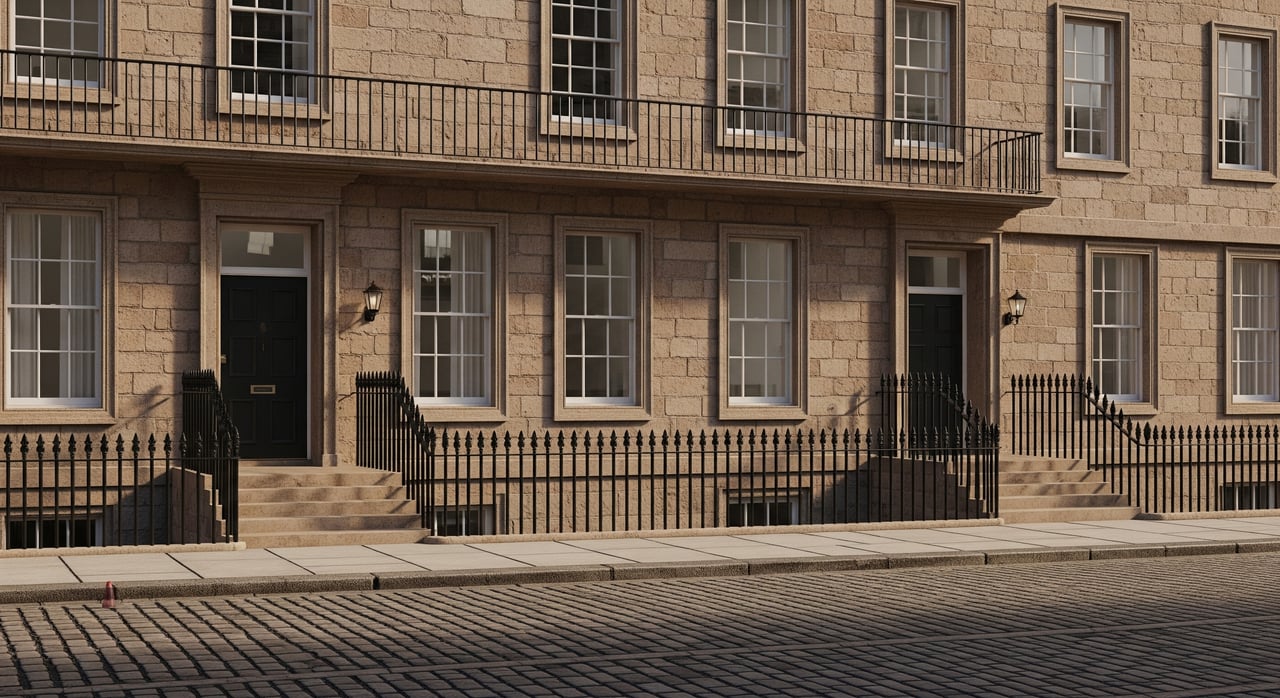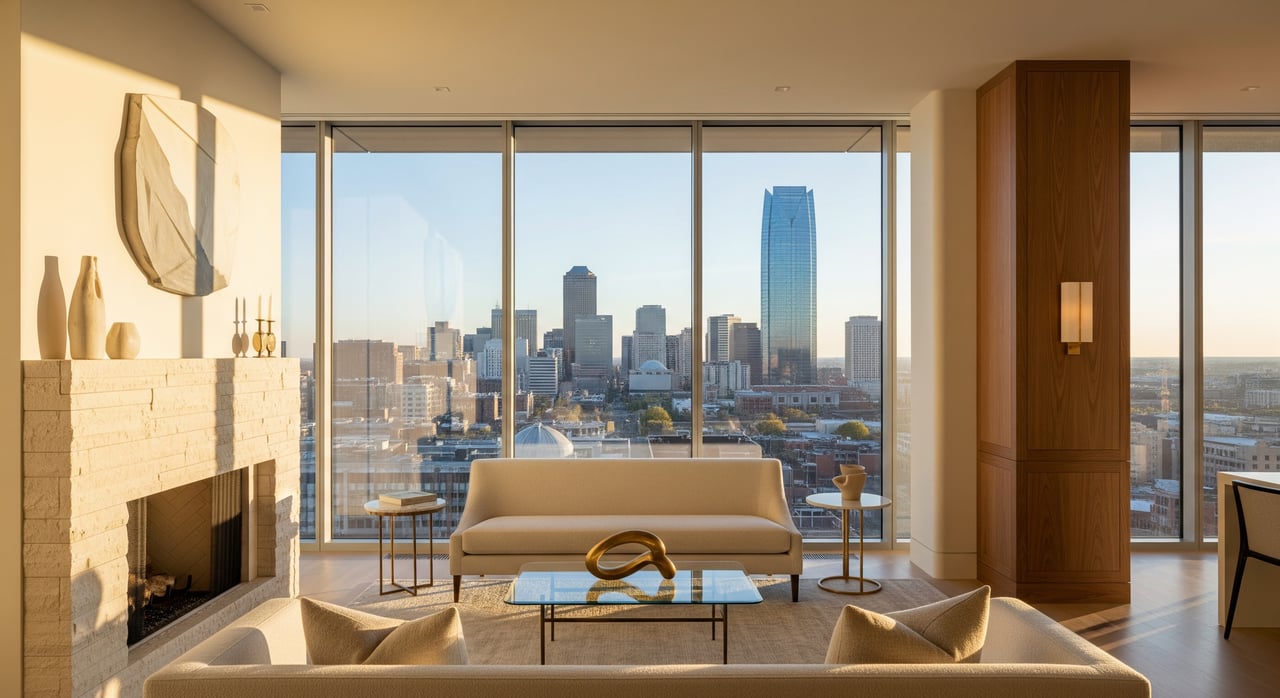Get to know Oklahoma City through its unique architecture. The city is home to a variety of impressive architectural landmarks that reflect the city's history, culture, and modern developments. These landmarks showcase a range of architectural styles and provide a glimpse into the city's unique character. For those interested in Oklahoma City real estate, these iconic buildings add to the city's charm and appeal. Whether you're a history buff or simply appreciate beautiful architecture, these Oklahoma City architectural gems are worth exploring.
Oklahoma State Capitol
2300 N Lincoln Blvd, Oklahoma City, OK 73105
The Oklahoma State Capitol, with its distinctive neoclassical design, is a notable landmark in the city's architectural landscape. Constructed in 1917, the Capitol building features a striking dome, which was added in 2002. The building houses the state government offices and is open to the public, allowing visitors to explore its beautiful interiors and learn about the state's history. The Capitol grounds also feature numerous monuments and statues.
Skirvin Hilton Hotel
1 Park Ave, Oklahoma City, OK 73102
The Skirvin Hilton Hotel, one of Oklahoma City's oldest and most prestigious hotels, is a stunning example of Art Deco architecture. Built in 1911, the hotel has been meticulously restored to its former glory and is listed on the National Register of Historic Places. The Skirvin's grand lobby, luxurious rooms, and elegant ballrooms make it a popular destination for both locals and tourists. The hotel's rich history and stunning design make it an important part of Oklahoma City's architectural heritage.
First National Center
120 N Robinson Ave, Oklahoma City, OK 73102
The First National Center is a historic skyscraper. Completed in 1931, this building is a masterpiece of Art Deco design, featuring intricate detailing and lavish interiors. The building's lobby, with its soaring ceilings and marble finishes, is a stunning example of early 20th-century elegance. The First National Center has been recently restored, preserving its architectural beauty while adapting it for modern use.
Devon Tower
333 W Sheridan Ave, Oklahoma City, OK 73102
The Devon Tower, the tallest building in Oklahoma City, is a striking example of contemporary architecture. The tower, completed in 2012, rises 50 stories and features a sleek glass exterior. The building houses the headquarters of Devon Energy Corporation and includes an observation deck that offers breathtaking views of the city. The Devon Tower's modern design and impressive height make it a prominent landmark in Oklahoma City's skyline and a testament to the city's architectural diversity.
Oklahoma City National Memorial & Museum
620 N Harvey Ave, Oklahoma City, OK 73102
The Oklahoma City National Memorial & Museum is a poignant architectural landmark that commemorates the victims of the 1995 Oklahoma City bombing. The memorial's design incorporates symbolic elements, such as the Field of Empty Chairs and the Reflecting Pool, creating a serene and reflective atmosphere. The adjacent museum provides insight into the tragedy and its aftermath. The memorial's architecture, which combines simplicity and symbolism, makes it a significant landmark in Oklahoma City's history and architecture.
Oklahoma City Museum of Art
415 Couch Dr, Oklahoma City, OK 73102
The Oklahoma City Museum of Art is an architectural gem that houses an impressive collection of art. The museum's design features a blend of classic and modern elements, creating an inviting and inspiring space. The building's grand entrance and striking facade reflect the city's cultural and artistic heritage. The museum's exhibitions and events make it a cultural hub and a key part of Oklahoma City's architectural landscape.
Architectural Styles in Oklahoma City
Oklahoma City boasts a diverse architectural landscape featuring various styles that range from historic to contemporary.
Art Deco
Art Deco architecture is characterized by its geometric shapes, intricate detailing, and luxurious materials. Buildings like the First National Center and the Skirvin Hilton Hotel are prime examples of this style, which emerged in the early 20th century and is known for its elegance and sophistication.
Mid-Mod
Mid-century modern, or "Mid-Mod," architecture is known for its clean lines, simple forms, and integration with nature. This style, which gained popularity in the mid-20th century, is often represented in Oklahoma City's residential areas, where homes feature open floor plans, large windows, and minimalist aesthetics.
Spanish Revival
Spanish Revival architecture draws inspiration from Spanish colonial styles and is characterized by stucco walls, red tile roofs, and arched doorways. This style is often seen in Oklahoma City's historic neighborhoods and is beloved for its warm Mediterranean charm.
Contemporary
Contemporary architecture focuses on clean lines, open spaces, and innovative materials. The Devon Tower and the 21c Museum Hotel are examples of this style in Oklahoma City, showcasing sleek designs and modern aesthetics. Contemporary architecture often emphasizes sustainability and functionality, reflecting the city's forward-thinking mindset.
Victorian
Victorian architecture, popular in the late 19th century, is characterized by its ornate detailing, steep gables, and decorative trim. In Oklahoma City, Victorian-style homes can be found in older neighborhoods, where their charming facades and intricate designs add a touch of historical elegance.
Googie
Googie architecture, often associated with mid-century roadside attractions, is known for its futuristic shapes, bold angles, and neon signage. This style, which emerged in the 1950s, is less common but can still be spotted in certain commercial areas of Oklahoma City, reflecting a playful and nostalgic era.
Traditional
Traditional architecture encompasses a range of classic styles that prioritize comfort, symmetry, and timeless design. In Oklahoma City, traditional homes often feature brick facades, pitched roofs, and formal layouts, creating a welcoming and familiar atmosphere.
Partner with the David Oliver Real Estate Group
You, too, can own a piece of Oklahoma City’s architectural history. Whether you’re looking for a contemporary design or something more traditional, there’s something for everyone here. The diverse architectural landmarks in Oklahoma City enhance the city's appeal for those interested in Oklahoma City real estate. Contact the David Oliver Real Estate Group today to learn more about the city's real estate market and discover how you can make Oklahoma City your home.




